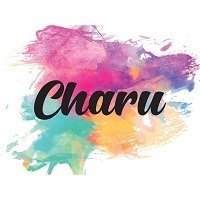Scroll Down For Video
Are you a Garment or a Home furnishings or an accessories manufacturer who is looking to know more about Shibori Printing then do watch out this video till end. Hello, this is Tushar from Charu Creation Pvt Ltd, a fashion fabric company at Nehru Place, New Delhi. Shibori is a Japanese manual resist dyeing technique, which produces patterns on fabric. In Japan, the earliest known example of cloth dyed with a shibori technique dates from the 8th century.
According to the Japanese folklore, Shibori was popular among lower class people who were forbidden from wearing silk. The term finds its origin from the Japanese verb shiboru which means “to wring, squeeze, press.” Unique patterns are created by twisting, folding, stitching and binding fabric using strings, rubber bands, clamps, wooden blocks etc.
The use of these objects prevents areas of a fabric from being saturated with dye, while the rest of the un tied regions of the fabric take up the colour of the dye that the fabric is dipped in; thereby giving stunning contrasting shades to the fabric. There are various forms of the Shibori technique. Kanoko shibori: Kanoko shibori is what is commonly thought of in the West as tie-dye.
This technique involves binding a certain few sections of the cloth to achieve the desired pattern. The pattern that is ultimately achieved depends on how tight, and from where the fabric is bound. Circular shapes are usually obtained with this technique. b) Muira shibori is also known as looped binding. It involves taking a hooked needle and plucking sections of the cloth and looping thread around each section twice. Important thing in this technique is that the thread is not knotted; tension is the only thing that holds the sections in place. Since no knot is used, Muira shibori is very easy to bind and unbind.
Therefore, this technique is widely used. The final pattern is a water-like design. c) Kumo shibori: Kumo shibori is a pleated and bound resist technique. This technique involves pleating sections of the cloth very finely and evenly. Then the cloth is bound in very close sections. The result is a very specific spider-like design. This specific design requires very precise technique. d) Nui shibori: Nui shibori includes stitched shibori.
A simple running stitch is used on the cloth then pulled tight to gather the cloth. The thread must be pulled very tight to work, and a wooden dowel must often be used to pull it tight enough. Each thread is secured by knotting before being dyed. This technique allows for greater control of the pattern and greater variety of pattern, but it is much more time consuming. e) Arashi shibori: Arashi shibori is also known as pole-wrapping shibori. The cloth is wrapped on a diagonal around a pole.
Then the cloth is very tightly bound by wrapping thread up and down the pole. Next, the cloth is scrunched on the pole. The result is a pleated cloth with a design on a diagonal. “Arashi” is the Japanese word for storm. The patterns are always on a diagonal in arashi shibori which suggest the driving rain of a heavy storm. f) Itajime shibori: Itajime shibori is a shaped-resist technique. Traditionally, the cloth is sandwiched between two pieces of wood, which are held in place with string. More modern textile artists can be found using shapes cut from acrylic or plexiglass and holding the shapes with C-clamps. The shapes prevent the dye from penetrating the fabric they cover. To view our collection of Shibori Prints, click on the link below.
Friends, I want to acknowledge you for watching this video. I hope that garments made out of our fabric collection would help you to win orders from your respective buyers and strengthen your business in these challenging times.

